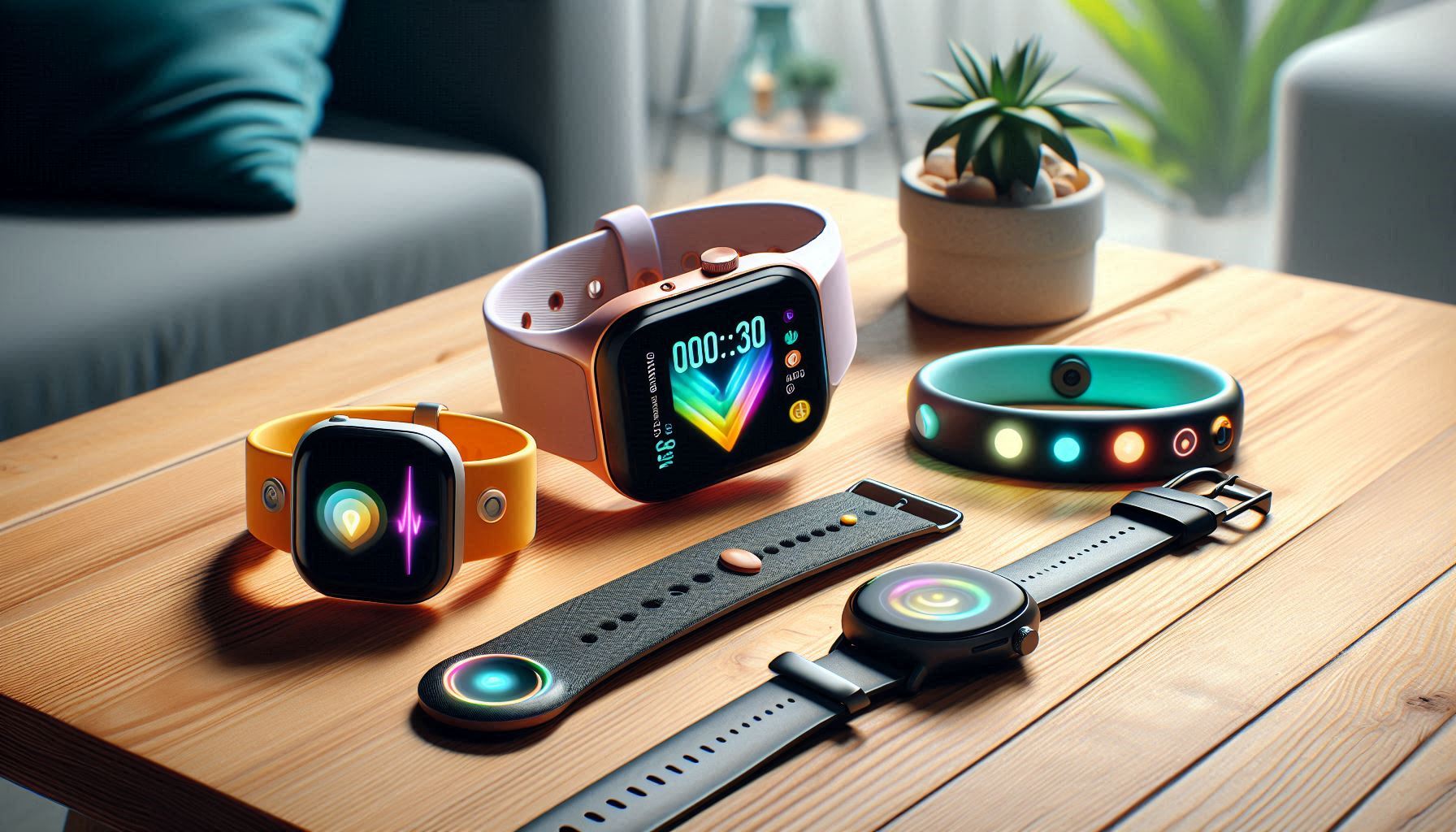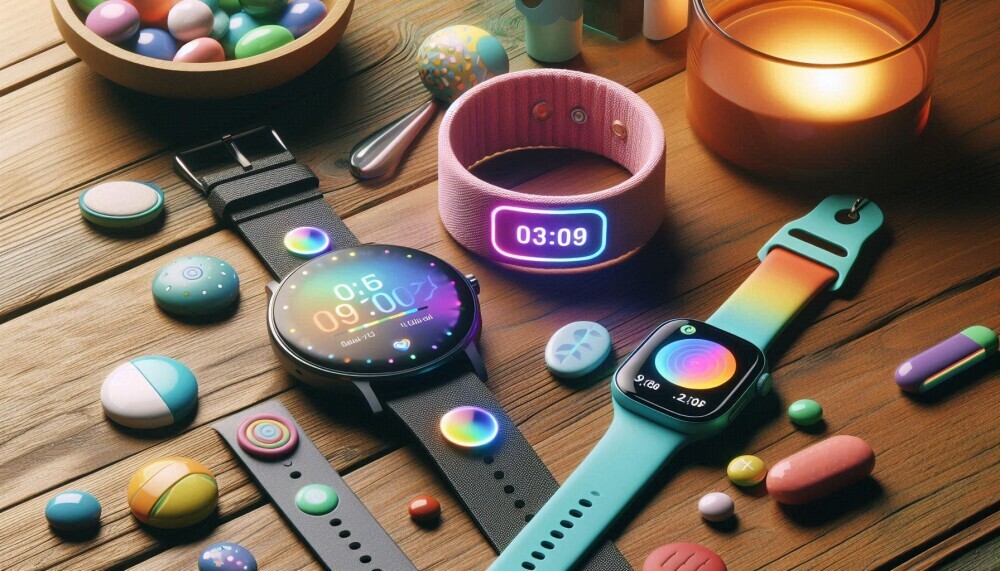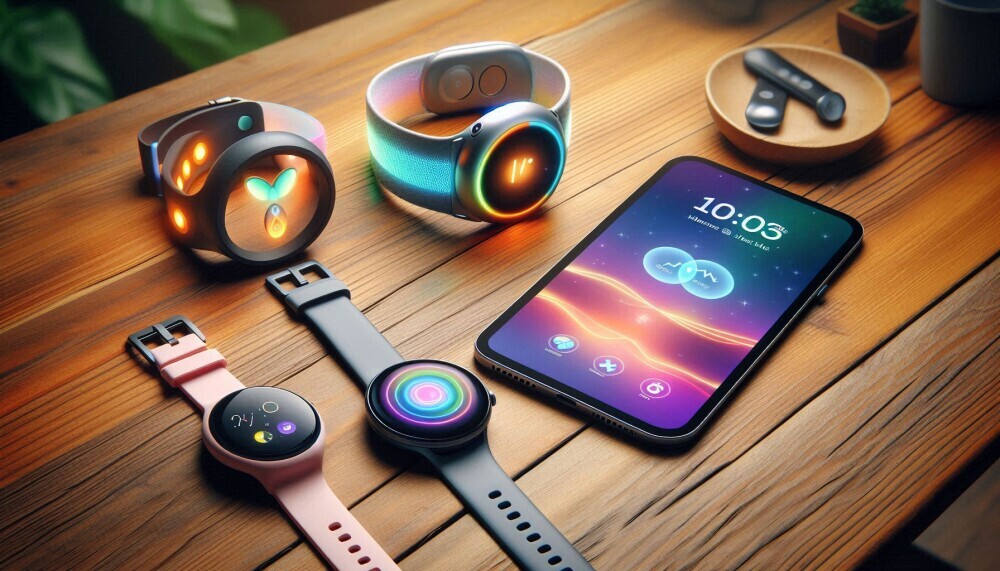Stress and mental health wellness tracking are now big subjects within the wearable health tech world. Our article subject today is How HRV, EDA & Skin Temperature Help Track Stress Realistically. Let’s get started!
Introduction
Stress is one of the most persistent challenges of modern life. It affects physical health, mental focus, relationships, and even long term wellbeing. While people have always experienced stress, the fast pace of work, constant digital connections, and rising demands of daily living have made it more critical than ever to monitor and manage it effectively.
This is where wearable technology steps in. Instead of simply guessing how stressed we are, modern devices track measurable signals in the body that reflect stress responses. Among the most reliable indicators are Heart Rate Variability (HRV), Electrodermal Activity (EDA), and skin temperature. Together, these metrics give a far more realistic picture of how the body reacts to both short term and chronic stress. In this article we will explore how these measures work, what benefits they bring, and how they can help individuals take control of their mental wellbeing.
What is HRV and How Does it Track Stress?
Heart Rate Variability, or HRV, measures the variation in time between heartbeats. Instead of looking at the average heart rate, it examines the tiny fluctuations in the rhythm of the heart.
✔ High HRV usually indicates a flexible nervous system and the ability to handle stress effectively.
✔ Low HRV often signals chronic stress, fatigue, or poor recovery.
Wearables use optical sensors on the wrist or chest straps to detect HRV. When stress increases, the sympathetic nervous system dominates, reducing HRV. Monitoring these fluctuations in real time gives individuals clear insight into whether their body is in a state of balance or strain.
What is EDA and Why Does it Matter?
Electrodermal Activity (EDA) measures changes in the skin’s ability to conduct electricity. Sweat glands are activated by the sympathetic nervous system, even in tiny amounts not noticeable to the human eye.
✔ High EDA activity is often linked to heightened stress or emotional arousal.
✔ Stable EDA levels suggest calmness and balanced emotional states.
EDA sensors are often built into wearables that make skin contact. The technology is especially useful for identifying stress spikes during moments of anxiety, public speaking, or difficult work tasks.
Skin Temperature and Stress
Skin temperature may not seem connected to stress at first glance, but it is deeply tied to how the body responds under pressure. When stress rises, blood flow is redirected from the skin to vital organs, causing peripheral skin temperature to drop slightly.
✔ Cooler skin temperatures can indicate heightened stress or alertness.
✔ Stable or warmer skin temperatures reflect relaxation and comfort.
By combining temperature with HRV and EDA, wearables can create a more realistic stress profile, showing not only when stress occurs but also how long it lasts and how effectively the body recovers.
The Power of Combining HRV, EDA, and Skin Temperature
While each of these signals is valuable on its own, the true strength lies in combining them.
☑ HRV shows how the nervous system is coping.
☑ EDA reveals immediate emotional arousal.
☑ Skin temperature highlights physiological shifts in circulation.
Together, they create a detailed and realistic stress map, offering insights far deeper than step counts or calorie estimates ever could.
Features Found in Stress Tracking Wearables
When shopping for a stress wearable, here are the features that matter most:
✔ Continuous HRV monitoring
✔ Built in EDA sensors
✔ Accurate skin temperature tracking
✔ Guided breathing and mindfulness exercises
✔ Daily and weekly stress summaries
✔ Sleep tracking for full recovery analysis
✔ Mobile app with clear insights
Benefits of Stress Tracking Through Biometrics
- Provides objective data instead of guesswork
- Helps identify specific stress triggers
- Encourages healthier coping mechanisms
- Supports better sleep and recovery routines
- Can improve focus and productivity
- Builds awareness of long term patterns
Pros and Cons of Stress Tracking
Pros
- Real time feedback on stress levels
- Encourages daily relaxation habits
- Enhances self awareness and resilience
- Combines well with therapy and lifestyle changes
Cons
- Accuracy can vary between devices
- May cause over fixation on data
- Not a substitute for professional treatment
- Some features require subscriptions
Who Should Use Stress Wearables
Stress wearables are suitable for:
- Professionals under constant work pressure
- Students preparing for exams
- Individuals struggling with anxiety who want extra awareness
- Athletes balancing training stress and recovery
- People interested in improving long term wellbeing
They may be less suitable for those uncomfortable with wearing devices daily or people looking for medical grade diagnostics rather than wellness tools.
How to Get the Best From Your Wearable
✔ Wear your device consistently, day and night
✔ Use guided breathing sessions provided in the app
✔ Review weekly summaries instead of obsessing over every data point
✔ Pair the wearable with good sleep hygiene and physical activity
✔ Treat it as a supportive tool, not a final diagnosis
6 Frequently Asked Questions
1. How accurate are HRV, EDA, and skin temperature readings?
They are accurate for wellness and lifestyle tracking, though not identical to medical equipment.
2. Do I need all three measurements for stress tracking?
While HRV alone provides valuable insights, combining it with EDA and skin temperature offers a more realistic picture.
3. Can stress wearables help with anxiety?
Yes, they can complement therapy by building awareness, but they should not replace professional guidance.
4. Are these wearables comfortable to wear all day?
Most are lightweight and designed for continuous use, but comfort depends on personal preference.
5. Do they help with sleep?
Yes, by identifying stress patterns and recovery cycles, they encourage better rest routines.
6. Are there hidden costs?
Some wearables require subscriptions for advanced features, so it is important to check pricing before purchase.
Key Takeaways
☑ HRV shows nervous system balance
☑ EDA reveals emotional stress spikes
☑ Skin temperature highlights circulation changes under stress
☑ Combining all three creates realistic stress profiles
☑ Wearables are best used as supportive lifestyle tools
☑ Awareness leads to better long term wellbeing
Conclusion
Stress tracking through HRV, EDA, and skin temperature represents a major leap in wearable wellness technology. Instead of vague wellness metrics, these measurements provide tangible evidence of how the body responds to daily pressures. By combining heart rhythm variability, skin conductivity, and temperature fluctuations, wearables deliver a more complete picture of stress than ever before.
Although these devices cannot replace therapy or medical intervention, they play an important role in building awareness, supporting healthier habits, and encouraging real time stress management. For those seeking greater control over their mental and physical wellbeing, the use of HRV, EDA, and skin temperature in wearable technology marks a realistic and effective way forward.
Our Thanks!
We would like to thank you for reading through this article on How HRV, EDA & Skin Temperature Help Track Stress Realistically. We hope that it has helped you to understand more about stress management. You should read one of our related articles! It’s titled Wearables For Mental Wellness: How Smart Devices Are Helping You Manage Stress.
Please let us know in the comments which type of wearable health tech device you are currently using or plan to buy in the future! The comments section is just underneath this article!
**Here is a bit of transparency. Our website www.vertevia.com does contain affiliate links and Amazon links. So, if you did make a purchase through the website, we may receive a small commission. This is at no extra cost to you whatsoever. It’s just a way for you to support us as we continue to bring you top quality content**
All the best!
Eamon




